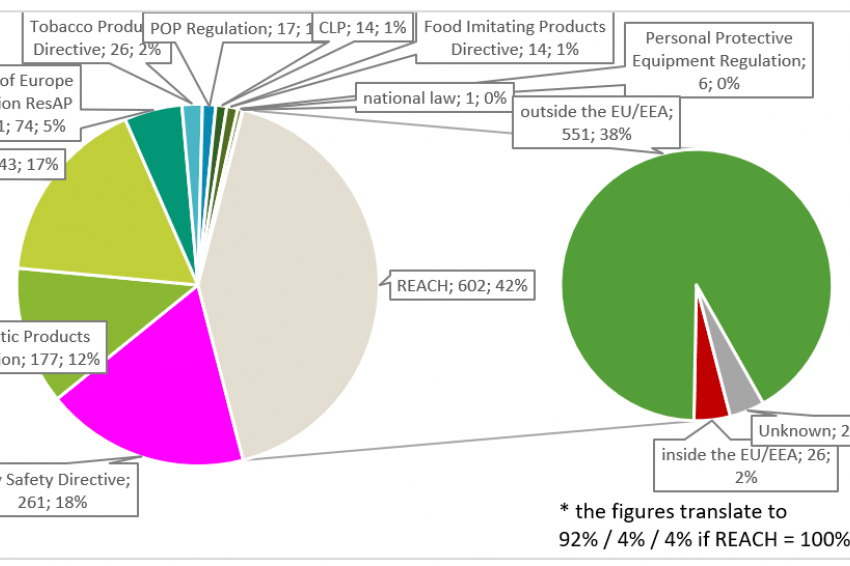CEFIC Analysis of the EU’s 2019 RAPEX Data
More than 90% of Non-compliant Chemicals in Consumer Products Come from outside of the EU
CEFIC, the European Chemical Industry Council, has published an analysis based on the EU’s 2019 RAPEX data. Through the “Safety Gate” rapid alert system for dangerous non-food products (RAPEX), EU/EEA member states and the European Commission exchange information about products posing a risk to health and safety of consumers. In 2019, RAPEX listed 1,468 instances of chemicals that were not in compliance with the law.
The key finding is that 92% of chemicals non-compliant with REACh in consumer products come from outside the EU/European Economic Area (EEA). The finding confirms an urgent need for EU member states to step up enforcement of REACh in imported goods.
Sylvie Lemoine, CEFIC executive director Product Stewardship, said: “We want REACh to work and consumers to be protected. Better enforcement of REACh in imports has to become a key element of the upcoming chemicals strategy for sustainability. We have the strictest chemical legislation in the world. But it will only fully work to the benefit of people and environment if properly enforced”.
According to CEFIC’s analysis, restricted phthalates, mostly found in children’s toys, are the most frequent case of non-compliance with REACh at 25%. The total number of all chemical non-compliance caught by RAPEX has increased by 24% compared to 2018.
“It is also important to ensure that restrictions under REACh are actually enforceable,” added Lemoine. “You can increase the number of inspections by ten or twenty times, but if enforcement authorities do not actually have tools to check compliance, a restriction is useless. We call for compliance tools and methodologies to accompany every restriction measure.”
Strengthening enforcement, especially in imports, has also been identified as one of the areas of improvement in the second REACh Review published by the European Commission in 2018.
Note: CEFIC’s analysis excludes button batteries and motor vehicles. The raw data has also been adjusted for the fact that a product can sometimes also be found in other countries or in different colors.








